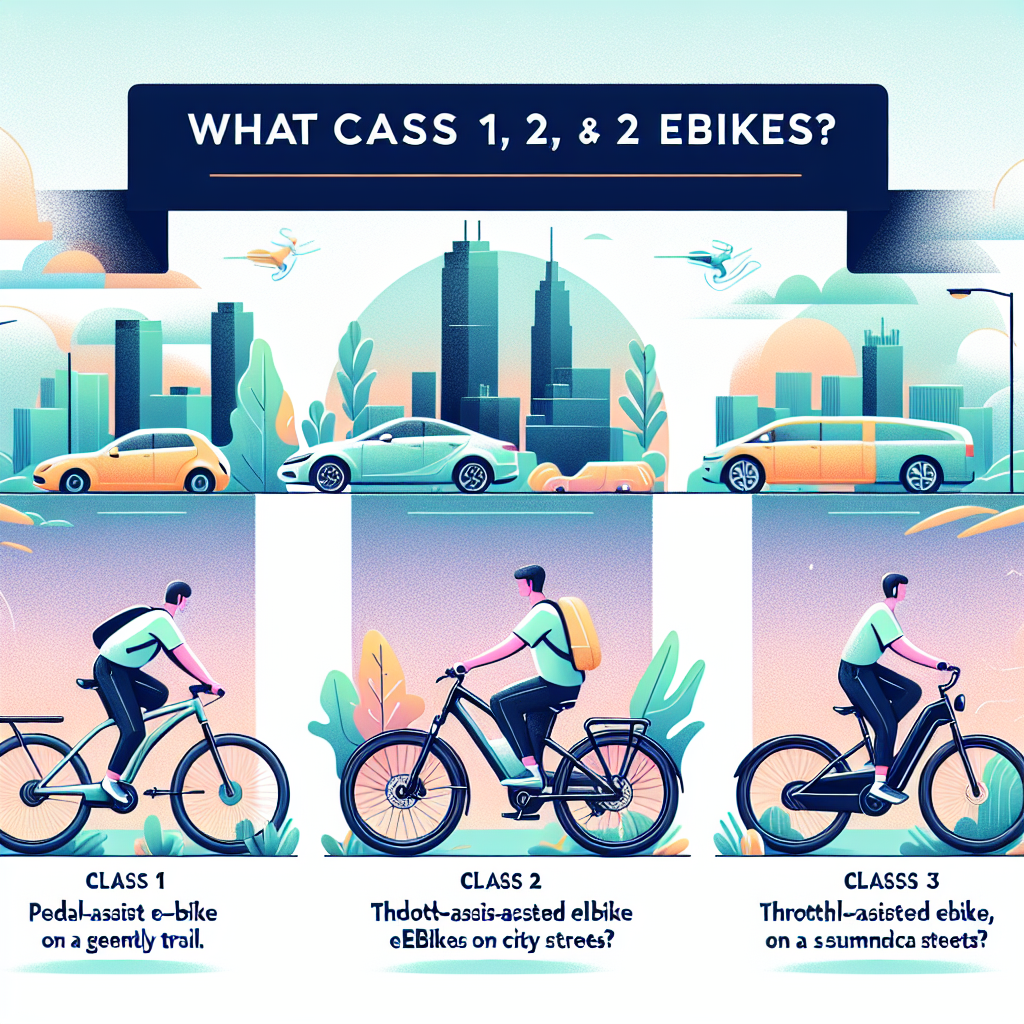If you’re looking into getting an eBike, you might have come across the terms Class 1, Class 2, and Class 3. These classifications can be a bit confusing, but don’t worry — I’m here to break them down for you! Understanding these classes will help you choose the right eBike based on your needs and where you plan to ride.
What Do the Classes Mean?
In simple terms, the class of an eBike determines how the motor assists you while riding. There are three main classes, and each one has different features when it comes to speed and pedal assist. Let’s dive into each class and what makes them unique.
🏁 Class 1 eBikes: Pedal Assist Only
What You Need to Know:
- Motor Type: Pedal assist only.
- Speed Limit: Maximum speed of 20 mph (32 km/h) on motor assist.
- Where You Can Ride: Class 1 eBikes are allowed on most bike paths, trails, and roads.
Pros:
- Simple and easy to use.
- Ideal for commuters who prefer to pedal but get a bit of help.
- Perfect for those who want a more “natural” cycling experience.
Cons:
- No throttle (you have to pedal to get assistance).
- Limited speed, which may not be fast enough for some riders.
Best For:
Commuters and casual riders who enjoy a little extra help pedaling, especially on flat terrain.
🏎️ Class 2 eBikes: Throttle-Assisted
What You Need to Know:
- Motor Type: Pedal assist + throttle.
- Speed Limit: Maximum speed of 20 mph (32 km/h) with throttle assistance.
- Where You Can Ride: Class 2 eBikes are typically allowed on bike paths, roads, and some off-road trails, depending on local regulations.
Pros:
- Throttle control means you can ride without pedaling if you prefer (great for short trips or quick errands).
- A more relaxed experience, especially for those who don’t want to pedal much.
Cons:
- You might not get as much exercise compared to Class 1 eBikes.
- Some places restrict throttle eBikes on certain trails or paths.
Best For:
Riders who want the option to ride without pedaling, or for those who need extra assistance in traffic or hilly areas.
🏆 Class 3 eBikes: High-Speed Pedal Assist
What You Need to Know:
- Motor Type: Pedal assist only, but with a higher maximum speed.
- Speed Limit: Maximum speed of 28 mph (45 km/h) on motor assist.
- Where You Can Ride: Class 3 eBikes are allowed on most roads, but not all bike paths or trails permit them due to the higher speeds.
Pros:
- Faster than Class 1 and 2 eBikes, great for commuting over longer distances.
- You get the motor assistance with the thrill of higher speeds.
- Still gets exercise, but with much more ease.
Cons:
- Not allowed on all bike paths or trails, especially those with speed restrictions.
- The faster speed might feel intimidating for beginners.
Best For:
Experienced riders or commuters who need to cover more distance quickly and don’t mind the higher speeds.
🚦 How Do You Choose the Right Class for You?
When choosing between Class 1, 2, and 3 eBikes, think about how and where you’ll use it:
- Class 1 is great for casual rides, short commutes, or recreational biking on bike paths and trails.
- Class 2 is perfect if you want a combination of pedaling and the convenience of a throttle — especially in urban areas or for short errands.
- Class 3 is for those who want speed and efficiency on longer commutes or more experienced cyclists looking for faster travel.
Remember, the class of eBike you choose will also depend on your local regulations, so be sure to check your area’s rules for eBike use on paths, trails, and roads.
🚲 Final Thoughts
Now that you know the difference between Class 1, 2, and 3 eBikes, you’re in a better position to pick the right bike for your needs. Whether you’re looking for a leisurely ride, a quick errand-runner, or a fast commuter bike, there’s an eBike class designed for you.
So, which class do you think suits your style best? Let me know in the comments below!
